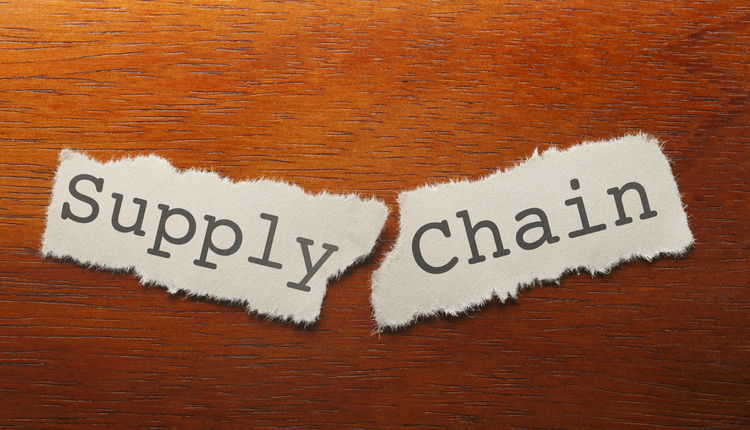Back in December, I emphasized how free shipping positively impacts customer satisfaction. When shoppers are happy with both product pricing and shipping costs, they reward the retailer with: more visits, increase in number and value of purchases, more shares/referrals, better reviews, increased loyalty and more repeat business.
This past holiday shopping season is proof in point.
According to the National Retail Federation, uncertainty over Washington’s fiscal cliff negotiations constrained holiday shoppers - 2012 holiday sales grew a scant 3.0%. All told, the U.S. Census Bureau’s Retail Sales Report found that the retail growth rate for December 2012 was the lowest since January 2010. Looking ahead, we can expect similar growth concerns. The National Retail Federation is predicting 2013 retail industry sales to grow 3.4%, a growth rate of almost 20% less than the preliminary 4.2% growth seen in 2012. January 2013 retail sales grew a measly 0.1%, negatively impacted by tax increases and higher gasoline prices.
The European outlook for 2013 is extremely disconcerting. The U.K.’s Centre for Retail Research predicts flat retail growth somewhere between zero and 0.5% in volume terms and 2.83% in financial terms. While this projection includes online sales, the institute warns that brick and mortar retail will suffer at the expense of online sales. To further retails concerns in the UK, on Friday, February 15th, the UK Office for National Statistics announced retail sales fell by 0.6% in January 2013. This is the fourth consecutive monthly drop and has sparked fears of an unprecedented “triple dip” recession.
While holiday season retail sales were generally low, ecommerce sales are the one bright spot. In mid-December, comScore reported that ecommerce spending for the first 44 days of the holiday season was $33.8 billion, up 13% over the previous year. The NRF’s digital division Shop.org reported that online sales grew 11.1% during November and December 2012 and that 2013 online sales should continue to grow between 9.0 and 12.0%.
What’s more, comScore also singled out the week of December 9-15, 2012, as the heaviest five-day online shopping period on record breaking all records with four individual days logging more than $1 billion in spending. The second week in December is particularly important for ecommerce because it’s the last week for shoppers to buy online and still feel comfortable that their gifts will arrive on time.
As a further incentive for holiday sales, Amazon and some other retailers offered free two-day shipping. In fact, on December 11, Amazon.com, Inc. extended the ordering deadline for Free Super Saver Shipping by two days. This enabled customers to place orders through December 18 with free delivery by Christmas on millions of items across electronics, toys, sporting goods, books, music, clothing, kitchen, tools and more. Amazon Prime members were able to place orders up until 7:00 p.m. EST on December 21 to receive deliveries by December 24 using Free Two-Day Shipping.
It’s no surprise that Free Shipping Day on Monday, December 17 (up 76% to $1.013 billion) was one of the busiest days of the holiday season with nearly 1,700 merchants offering free shipping by Christmas Eve through FreeShippingDay.com or on their own sites. In just four years, Free Shipping Day has grown from a one-off Black Friday spin-off to a billion-dollar day for online sales.
Most retailers are adopting free shipping because it drives customers to spend up to 40% more per order and because their competitors will eat their lunch if they don’t. But free shipping is anything but free for retailers, especially when it also includes pricey overnight delivery.
In order to keep free shipping from cutting into their margins, etailers are getting smart about their shipping spend. They are negotiating tough contracts with the parcel shipping services and opting for less costly last-mile delivery via the United States Postal Service (USPS). This will be increasingly tough in 2013, however, if the United States Post Office eliminates Saturday delivery beginning in August. While free shipping is here to stay, so is the importance of managing your shipping spend.
This past holiday shopping season is proof in point.
According to the National Retail Federation, uncertainty over Washington’s fiscal cliff negotiations constrained holiday shoppers - 2012 holiday sales grew a scant 3.0%. All told, the U.S. Census Bureau’s Retail Sales Report found that the retail growth rate for December 2012 was the lowest since January 2010. Looking ahead, we can expect similar growth concerns. The National Retail Federation is predicting 2013 retail industry sales to grow 3.4%, a growth rate of almost 20% less than the preliminary 4.2% growth seen in 2012. January 2013 retail sales grew a measly 0.1%, negatively impacted by tax increases and higher gasoline prices.
The European outlook for 2013 is extremely disconcerting. The U.K.’s Centre for Retail Research predicts flat retail growth somewhere between zero and 0.5% in volume terms and 2.83% in financial terms. While this projection includes online sales, the institute warns that brick and mortar retail will suffer at the expense of online sales. To further retails concerns in the UK, on Friday, February 15th, the UK Office for National Statistics announced retail sales fell by 0.6% in January 2013. This is the fourth consecutive monthly drop and has sparked fears of an unprecedented “triple dip” recession.
While holiday season retail sales were generally low, ecommerce sales are the one bright spot. In mid-December, comScore reported that ecommerce spending for the first 44 days of the holiday season was $33.8 billion, up 13% over the previous year. The NRF’s digital division Shop.org reported that online sales grew 11.1% during November and December 2012 and that 2013 online sales should continue to grow between 9.0 and 12.0%.
What’s more, comScore also singled out the week of December 9-15, 2012, as the heaviest five-day online shopping period on record breaking all records with four individual days logging more than $1 billion in spending. The second week in December is particularly important for ecommerce because it’s the last week for shoppers to buy online and still feel comfortable that their gifts will arrive on time.
As a further incentive for holiday sales, Amazon and some other retailers offered free two-day shipping. In fact, on December 11, Amazon.com, Inc. extended the ordering deadline for Free Super Saver Shipping by two days. This enabled customers to place orders through December 18 with free delivery by Christmas on millions of items across electronics, toys, sporting goods, books, music, clothing, kitchen, tools and more. Amazon Prime members were able to place orders up until 7:00 p.m. EST on December 21 to receive deliveries by December 24 using Free Two-Day Shipping.
It’s no surprise that Free Shipping Day on Monday, December 17 (up 76% to $1.013 billion) was one of the busiest days of the holiday season with nearly 1,700 merchants offering free shipping by Christmas Eve through FreeShippingDay.com or on their own sites. In just four years, Free Shipping Day has grown from a one-off Black Friday spin-off to a billion-dollar day for online sales.
Most retailers are adopting free shipping because it drives customers to spend up to 40% more per order and because their competitors will eat their lunch if they don’t. But free shipping is anything but free for retailers, especially when it also includes pricey overnight delivery.
In order to keep free shipping from cutting into their margins, etailers are getting smart about their shipping spend. They are negotiating tough contracts with the parcel shipping services and opting for less costly last-mile delivery via the United States Postal Service (USPS). This will be increasingly tough in 2013, however, if the United States Post Office eliminates Saturday delivery beginning in August. While free shipping is here to stay, so is the importance of managing your shipping spend.











